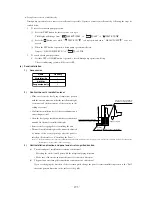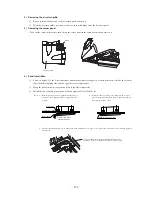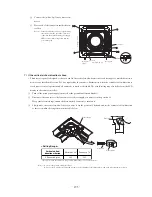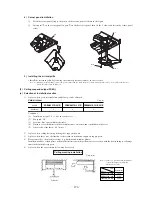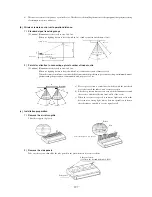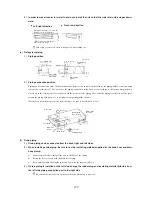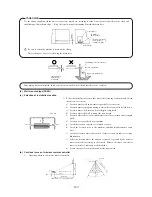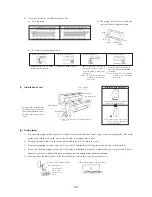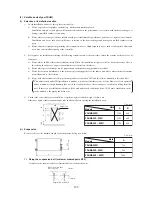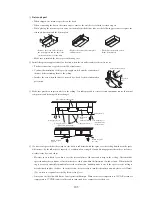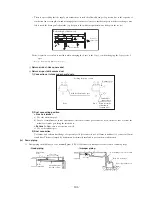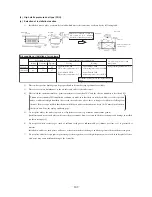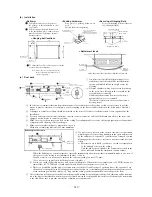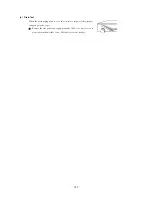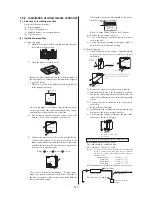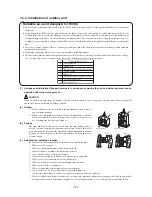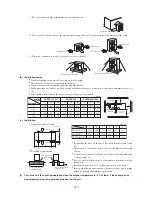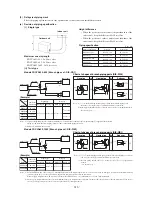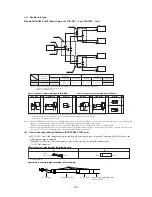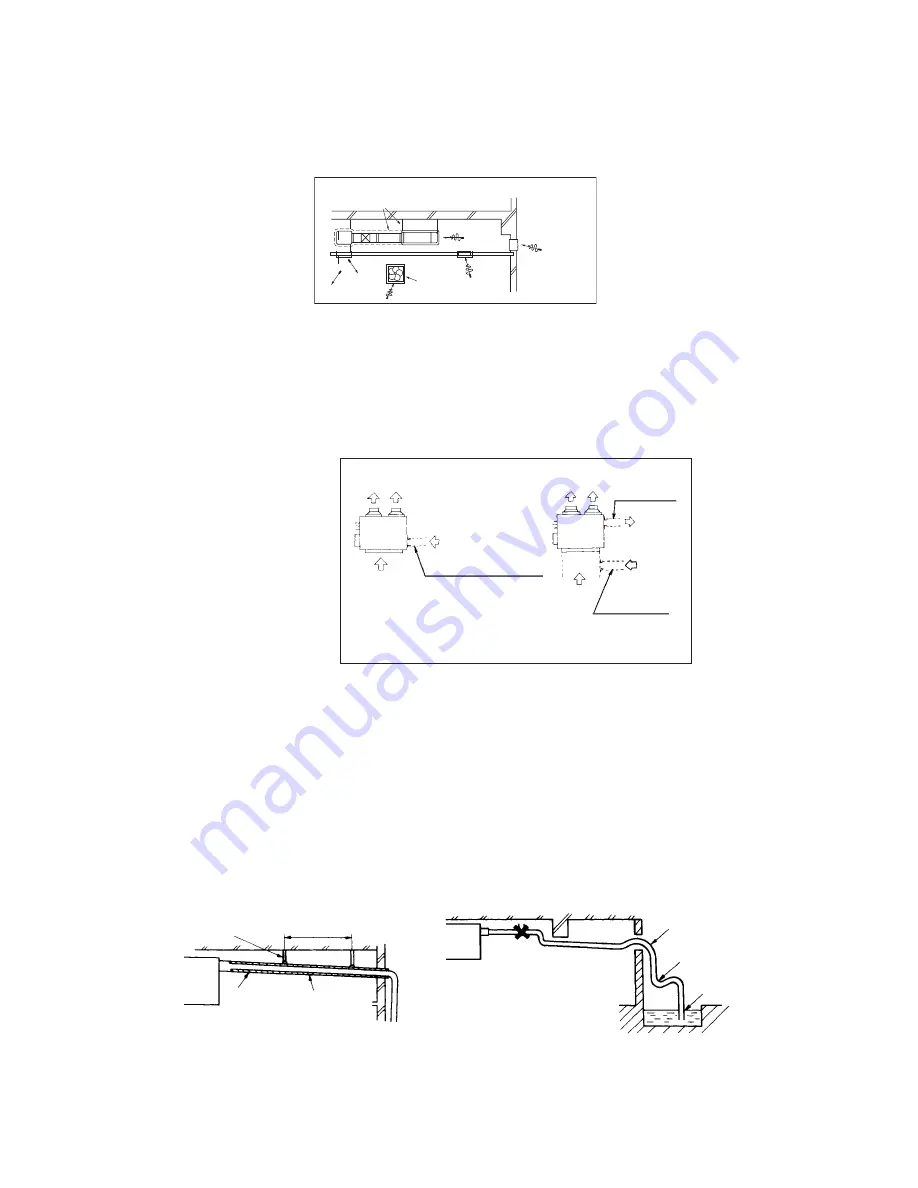
-
206
-
• There is a possibility that the supply air volume may exceed the allowable range of operation due to the capacity of
ventilation fan or strength of wind blowing against external air louver so that drainage from be heat exchanger may
fail to reach the drain pan leak outside (e.g. drip on to the with consequential water leakage in the room.)
Notice: Aspecific cover plate is available when changing the 4 spot to the 3 spot, or when changing the 3 spot to the 2
spot.
Note (1) Do not change from 2 spot to 1 spot.
Bad example of duct work
For ventilation
Louver to
outdoor air
Return air duct: Use square duct.
Return air port with canvas duct
1) Connection of intake and exhaust ducts.
2) Duct connecting position.
< Fresh air intake >
a) Use side air intake port.
b) In case of simultaneous intake and exhaust, the side air intake port cannot be used, therefore, take air from the
midway air intake port along the intake duct.
< Exhaust >
Make sure to use suction as well.
c) Use a side exhaust port.
3) Duct connection
Use intake and exhaust duct fl ange of separately sold (for connection of ø125mm round duct) to connect ø125mm
round duct. The duct clamped by bands must be thermally insulated to prevent dew condensation.
(iv) Drain
piping
1) Drain piping should always be in a downhill grade (1/50-1/100) and avoid riding across an elevation or making traps.
1.5 m ~ 2m
Suspension
bolts
Heat
insulation
A downhill grade
of 1/100 or more
Air vent
Avoid riding across an elevation
Keep free from traps
Do not pipe under water
•
Good piping
•
Improper piping
Looking from top of unit
Exhaust port
Side fresh air intake port
Intake duct
(square duct)
Fresh air intake
port midway
of return duct
Fig.2
Fig.1


